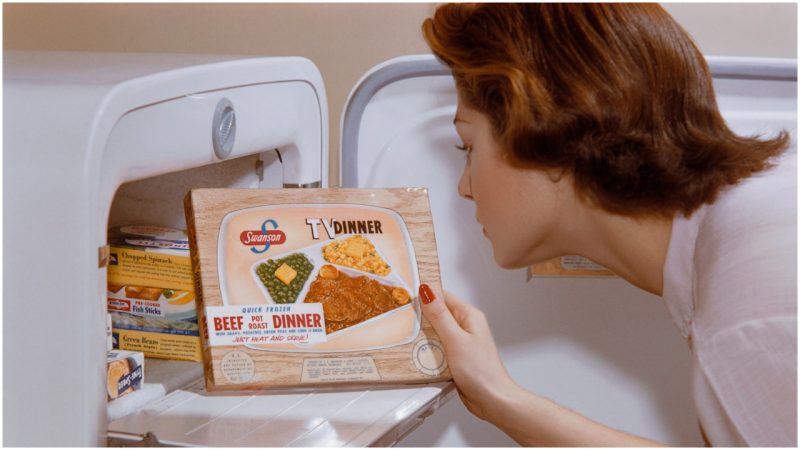Before ready-made food saved families’ time and kept working households in order, people didn’t think in terms of buying their meals but in terms of cooking it.
It wasn’t that long ago when the working class couldn’t afford to eat in restaurants and everyone relied on someone’s cooking skills at home.
There was an interesting turn out of events when an eating habit caused drastic changes in many households and in the food industry itself.
Back in 1953, somebody at the Swanson and Sons Company for frozen food made a terrible miscalculation of the turkey demand for Thanksgiving.

The supply of turkeys resulted in 26 tons of frozen birds sitting in ten refrigerated railroad cars which cost the company a fortune. The question was how to make the American people hungry for turkey after Thanksgiving?
At the beginning of 1954, Gerry Thomas, an executive for Swanson and Sons was on a Pan American flight to visit a company distributor. In the plane, he was served a meal on a metal tray which sparked a brilliant idea that solved the company’s supply issue.
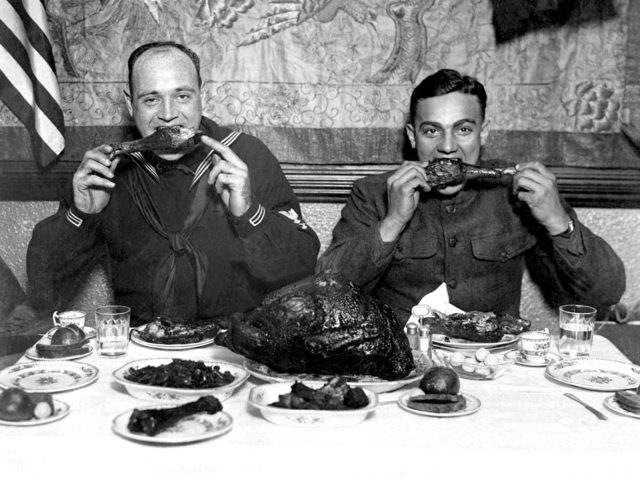
Thomas ordered 5,000 aluminum trays, divided into segments, packaged with vegetables, peas topped with a segment of butter, sweet potatoes, cornbread, and of course, leftover turkey.
The food trays became widely known as “TV dinners” because of their shape and were sold in the supermarkets across the States at the price of 98 cents (roughly $9 today).
It was a solution and a great one indeed. Ten million turkey dinners were sold in only the first full year of production.
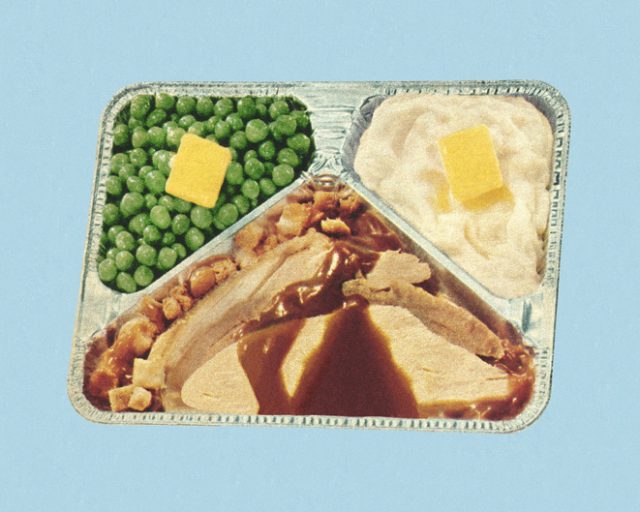
The timing for their sale was perfect. It was the post World War II period when a lot of social changes were occurring. There was still a strict division of labor by gender, but more and more, women were beginning to work outside the home.
Many housewives divided their time between their jobs and their domestic responsibilities which was hard and tiring.
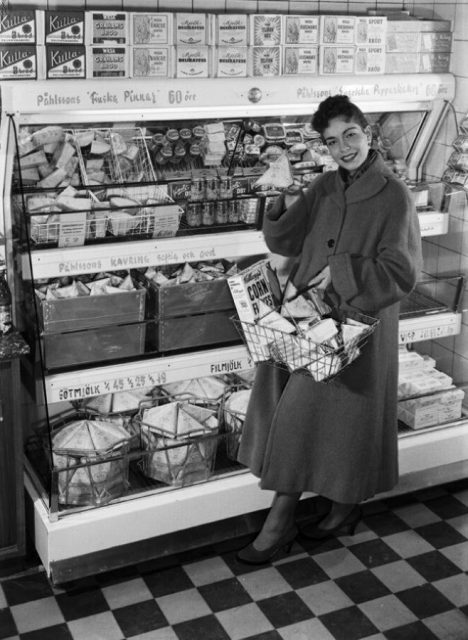
Since they had the same working hours as their husbands, it was hard to manage the cooking and eating hours so that the whole family would be satisfied.
Saving time became a priority for everyone. So, ready-made food as an alternative to the homemade meal started taking off in the United States. The TV dinners came as an answer to a prayer for many working women.
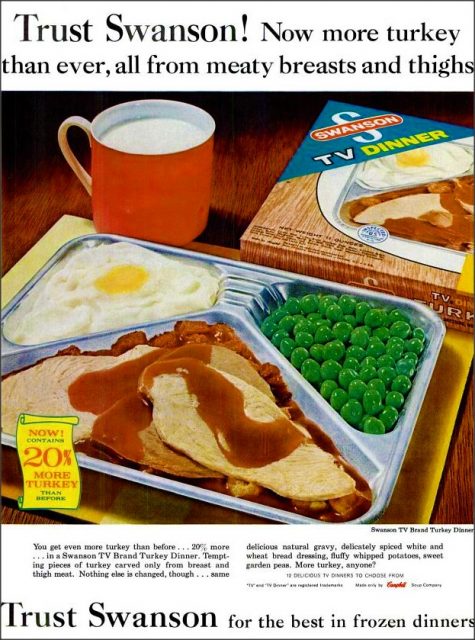
TV dinners had a fair share of commercial runs during the 1980s and 1990s with Mason Adams as the announcer.
The original marketing campaign for them was a regular magazine ad showing a stylish woman wearing a smart green suit, a feathered hat, and black gloves. In the presence of her smiling husband reading a newspaper in a tan suit and a bow tie, the woman is taking a TV dinner out of a grocery bag. The copy line for this bit of Ozzie and Harriet heaven reads: “I’m late—but dinner won’t be.”
This was also the start of a revolution in the food industry.
As for the Swanson Company, they were selling 13 million TV dinners per year by 1956, had 4,000 employees, and 20 factories (that were bought by the Campbell Soup Company). Swanson had the honors of sponsoring the game show “The Name’s the Same” hosted by Robert Q. Lewis.
And the man behind the whole idea, Gerry Thomas was called “the father of the TV dinner” even though in an interview he modestly asked not be called that claiming that he only innovated the tray on which the food was to be served.
